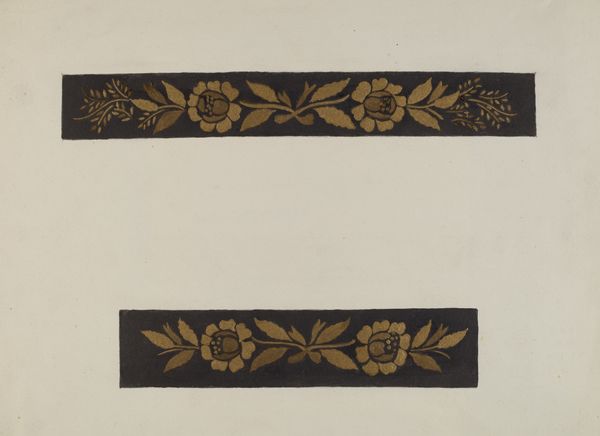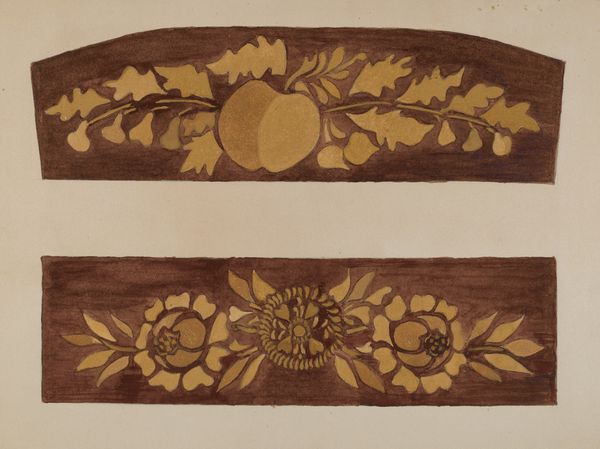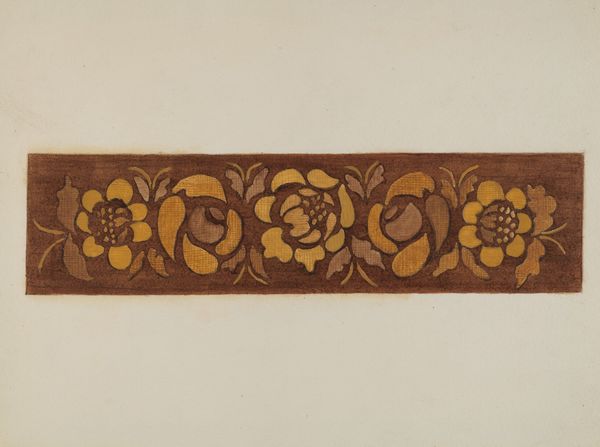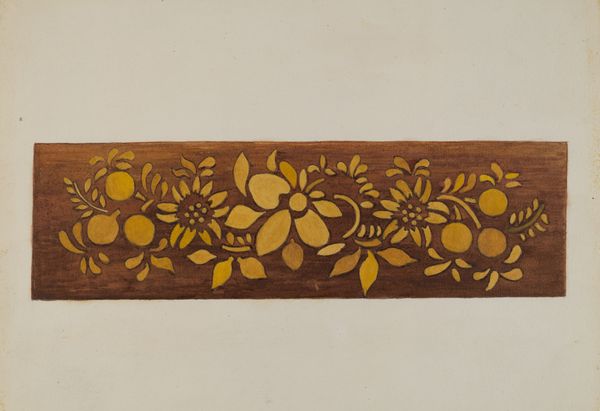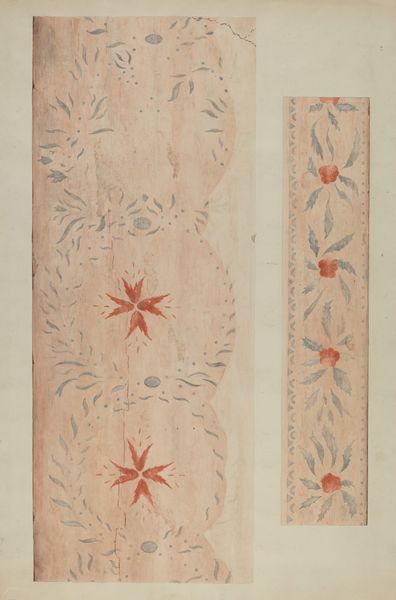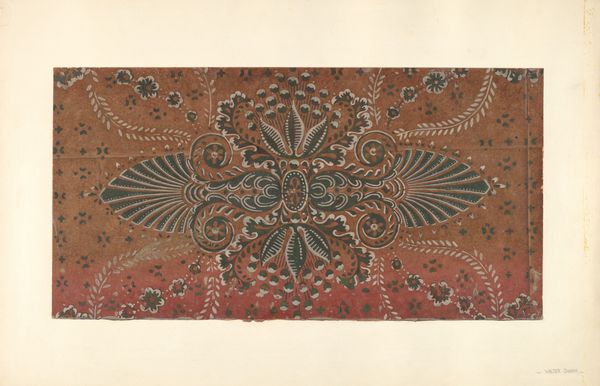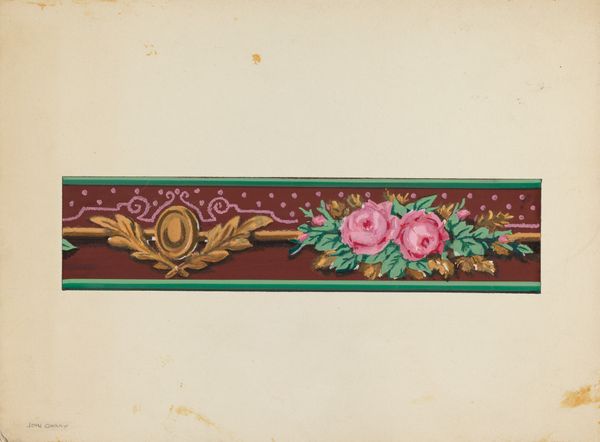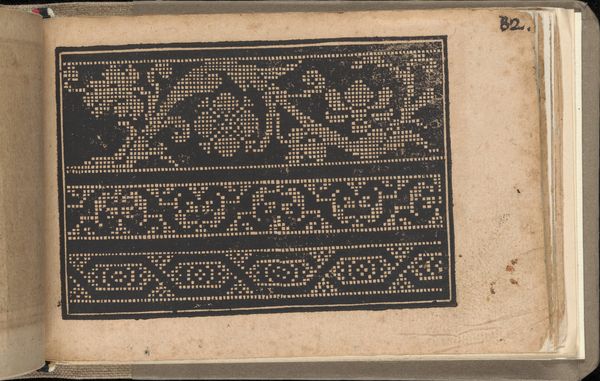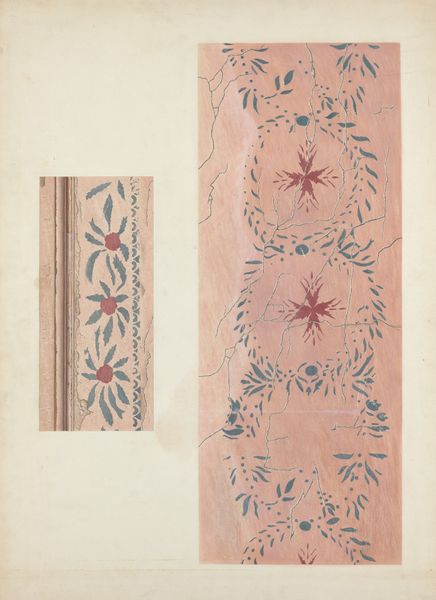
drawing, watercolor
#
drawing
#
decorative element
#
water colours
#
watercolor
#
decorative-art
#
decorative art
Dimensions: overall: 24.9 x 35.5 cm (9 13/16 x 14 in.) Original IAD Object: As on rendering
Copyright: National Gallery of Art: CC0 1.0
Curator: I find myself immediately drawn to the high contrast in this piece, it is so visually striking. What are your first thoughts? Editor: The interplay of dark and light gives the impression of ornamentation in relief. In some ways the patterns remind me of cake decorating, you can feel how each mark has been crafted, like piping, but there are social dynamics at play. This work, entitled "Hitchcock Chair," dated around 1940, uses watercolor and drawing media. This type of chair became popular in the 19th century through the Hitchcock Chair Company. It offered affordable, mass-produced seating options. Curator: You make an important point about mass production, it is key to consider how such images impact visual culture and perceptions of beauty. Do you believe it can tell us something about what historical ideas, visual elements or social factors informed the visual representation of labor through decorative art? Editor: I think the interesting question is to ponder how artisanal production intersects with ideas of social advancement. Chair making moved from local craftsman to workshops using industrial labor. As it pertains to materiality, there were also material changes. The early processes would have used higher quality materials such as native woods like maple. They eventually went to poplar wood which took paint better. Also rush seats became cane seats for durability. Curator: Indeed, that change signifies a wider shift in how furniture and interior decoration were viewed in the domestic sphere, doesn’t it? The imagery of the chair isn't incidental, since decorative art was often used to signify taste. These images likely served a role in social differentiation. Editor: And who decides what's taste and beauty. What power structures were in play in mass production and advertisement? Where do notions of beauty emerge and how does materiality influence those decisions? It is a drawing so the process of making must have also come into play when mass production became popular. Curator: Absolutely. Seeing how art mirrors broader societal trends and power dynamics reveals so much about an era. Editor: It definitely gives you food for thought. Seeing process and materiality alongside the impact of a visual work raises plenty of interesting questions.
Comments
No comments
Be the first to comment and join the conversation on the ultimate creative platform.
